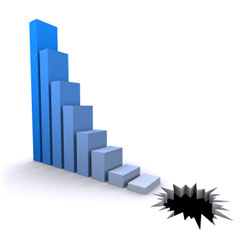Depreciation as a Way to Reduce Taxable Income and Expenses
Depreciation is a term that denotes the decrease in value of tangible assets such as buildings, machinery and equipment, and other fixed assets. The value of an asset is reduced over its useful life for accounting purposes. Basically, the term refers to the conversion of the original price or a fixed or tangible capital asset into an operating expenditure over its lifespan.
Reasons for Depreciation
Wear and tear is the main reason for the decrease in value. For instance, a vehicle depreciates because of market conditions, normal wear and tear, age, wear on the tires and other components, and other factors. New models are constantly developed and offer advanced features. A 5-year car is less valuable because new models are available. Besides wear and tear, there are other reasons such as inefficiency, resource usage, usage rights, and perishability. Assets such as inventory have a short useful life. In the case of oil reserves and other natural resources, depletion is the main cause of depreciation. Usage rights are another factor. A company that has the right to use an asset within a certain period is one example. Damages and impairment also cause assets to decrease in value.

Methods for Calculating Depreciation
There are different methods in use, and the easiest one is to use an online calculator. Some calculators are based on the straight line method, and users enter the number of years or months to depreciate over and the historical cost. You will get the period in months, along with the annual and monthly amount. There are also reducing balance method calculators that are based on the annual depreciation rate and the original cost. Some companies also purchase software that allows users to group financial data and offers customizable reports for different accounting periods.
Other methods are the group, sum of years digits, annuity, and others. The composite method, for example, takes into account factors such as the depreciable and historical cost, the useful life of the asset, and the salvage value. This method is used to calculate the composite rate and life. The units of production method is based on factors such as depreciation cost per unit and units of production. The declining balance method is another option. For example, a company has an asset with a useful life of 8 years, salvage value of $60, and original cost of $1,500. The salvage value is subtracted from the purchase price ($1,500 – 60) and divided by the useful life of the asset ($1440 ÷ 8) = $180. Thus the business would take charges of $180 per year if the straight line method is used. Some companies also use accelerated depreciation for tax purposes. This is usually done when the lifespan of an asset cannot be distributed over a straight line. A larger portion of the expenses is then accounted for during the first years. This method is used for vehicles, for example. Common methods are the double declining balance and sum of the years digits. Under the first method, a rate of 15 percent would double meaning that the asset would be depreciated by 30 percent each year.
Benefits for Businesses
Companies enjoy a number of benefits, and one is tax deduction. Expenses are beneficial for businesses because they generate tax savings by lowering the taxable income. Businesses that expect higher profits often try to reduce their taxable income. Cost recovery and asset valuations are other reasons. Depreciation allows businesses to recover a percentage of the original purchase price. The cost is recovered over the asset’s lifespan rather than immediately. This is a way to set aside money to be used for the purchase of a replacement equipment. Asset valuation is a way to report and record fixed assets and adjust their value. Accumulated depreciation is subtracted from the value of the asset to find the net book value. Matching expenses is yet another benefit for businesses. They incur expenses when using assets for their normal operations. Thus, they can match the revenues generated by different assets with the corresponding expenses.
Related Articles
Clear Title and Borrowing Against Your Home Equity
Clear title means that a person or company owns a house or another real estate and is clear of encumbrances. Also known as free and clear, good, just, and clean title, it refers to a state in which there are no claims to legal ownership. There is no levy or lien from financial institutions and no...
Asset Classes That Bring Long-Term Benefits
Assets can be categorized in different ways, but the main classes are tangible and intangible. They can be subdivided into fixed and current, and examples include furniture, machinery, and real estate. Intangible Assets and Economic BenefitsBrands, goodwill, and intellectual property fall in this...
